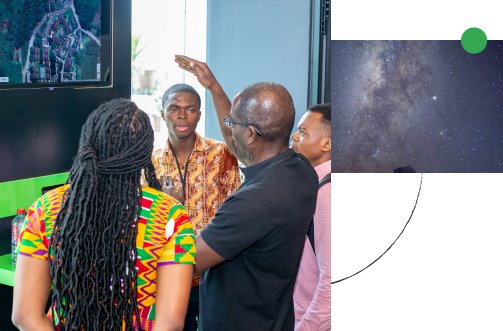
Nupur Jain
Nupur Jain is a product leader at Google, with expertise in AI-driven experiences, platform innovation, and human-centered technology. She has worked on Gemini (Bard), ChromeOS, and YouTube Ads, driving AI-powered extensions and transformative product experiences. Passionate about building intuitive and impactful AI products, she collaborates across teams to integrate advanced technologies into everyday user interactions.
Authored Publications
Sort By
Society-Centric Product Innovation in the Era of Customer Obsession
International Journal of Science and Research Archive (IJSRA), Volume 14 - Issue 1 (2025)
Preview abstract
This article provides a comprehensive analysis of the evolving landscape of innovation in the technology sector, with a focus on the intersection of technological progress and social responsibility. The article explores key challenges facing the industry, including public trust erosion, digital privacy concerns, and the impact of automation on workforce dynamics. It investigates responsible innovation frameworks' emergence and implementation across various organizations, highlighting the transformation from traditional development approaches to more society-centric models. The article demonstrates how companies balance innovation speed with social responsibility, incorporate ethical considerations into their development processes, and address digital disparities across different demographics. By examining how companies balance the pace of innovation with ethical responsibilities, integrate social considerations into their processes, and address digital inequities across diverse demographics, the article underscores the transformative potential of these frameworks. Through insights into cross-functional teams, impact assessment tools, and stakeholder engagement strategies, it demonstrates how responsible innovation drives both sustainable business value and societal progress.
View details
A Strategic Framework for AI Product Development and Evaluation in Enterprise Software
International Journal of Computer Engineering and Technology (IJCET), Volume 16, Issue 1 (2025)
Preview abstract
This article presents a comprehensive framework for developing and evaluating AI products in enterprise software systems, addressing the critical challenges organizations face during AI transformation initiatives. The article introduces a structured approach to decision-making for AI integration, encompassing ROI evaluation, user value assessment, and business impact analysis. It establishes distinct methodologies for both assistive and autonomous AI systems, providing detailed metrics for measuring success and performance across different implementation scenarios. Across various industries, the framework has shown potential in reducing implementation time, increasing user adoption rates, and enhancing overall project success rates, highlighting its practical applicability. The article methodology combines theoretical analysis with practical case studies, resulting in a flexible yet robust framework that can adapt to various organizational contexts. The framework's primary contribution lies in its practical approach to bridging the gap between theoretical AI capabilities and real-world implementation challenges, offering product leaders a systematic methodology for AI product development and evaluation. By addressing both current implementation challenges and future scalability requirements, this framework provides organizations with a foundational tool for navigating their AI transformation journey while maintaining a focus on measurable business outcomes and user value creation.
View details
AI as a Catalyst for Educational Equity: Addressing Global Teacher Shortages and Learning Disparities
International Journal of Scientific Research in Computer Science, Engineering and Information Technology (IJSRCERT) (2025)
Preview abstract
The global education system is grappling with a critical shortage of teachers, threatening the achievement of universal quality education. This article examines how artificial intelligence (AI) technologies can revolutionize educational access and equity by addressing these systemic challenges. Through a comprehensive article analysis of AI-enabled solutions, including personalized learning mechanisms, virtual tutoring systems, and intelligent content distribution platforms, the article explores the transformative potential of these technologies in democratizing education. The article investigates the implementation of AI across established educational platforms, examining their effectiveness in providing adaptive learning experiences, breaking down language barriers, and ensuring cultural relevance. The article demonstrates that strategic AI integration can significantly impact learning outcomes while helping to bridge the global teacher shortage gap. The article also addresses critical implementation challenges, providing policy recommendations and resource allocation frameworks for successful AI adoption in education systems worldwide. This article analysis contributes to the growing body of knowledge on educational technology by offering practical insights into how AI can be leveraged to create more inclusive, effective, and accessible learning environments, ultimately advancing the goal of quality education for all.
View details
Audible Charging Sounds to Indicate Device Battery Level
Patent (2023) (to appear)
Preview abstract
Users of battery-powered electronic devices rely on visual battery level indicators to discern the charge status of the battery and correspondingly, available device usable time before the device needs to be plugged in. However, users with vision impairments or those not looking at the device screen may not be able to distinguish the battery level from displayed indicators. Such users may plug in the charging cable more often than necessary, out of precaution. This disclosure describes the use of a variety of audible sounds when a device is attached to a charging cable that is plugged into a power source to indicate that the device is being charged and also to indicate the current amount of charge remaining on the battery. The device operating system or other software can detect the plugged-in state as well as the battery level and play the corresponding sounds at appropriate times.
View details
Computer platform with shared user experience interface
Patent (2022) (to appear)
Preview abstract
Aspects of the technology utilize an integrated computing device that supports a shared, communal interaction while still enabling a personalized experience. This includes a unified desktop experience based on presence, a shared family or common space as part of an ambient visual display, and seamless switching involving user interface elements when the display device is rotatable. A presence sensor detects whether someone is at or near the device. When at least one person is identified, specific information is surfaced on a display based on the current context, enabling the person(s) to interact with the device in selected ways. The device evaluates a current presentation state of the display and selects content items to present. The presentation state can include content currently being displayed, other context signals, or any other information associated with the state of the device, such as whether the device is locked or logged-in, for example.
View details
